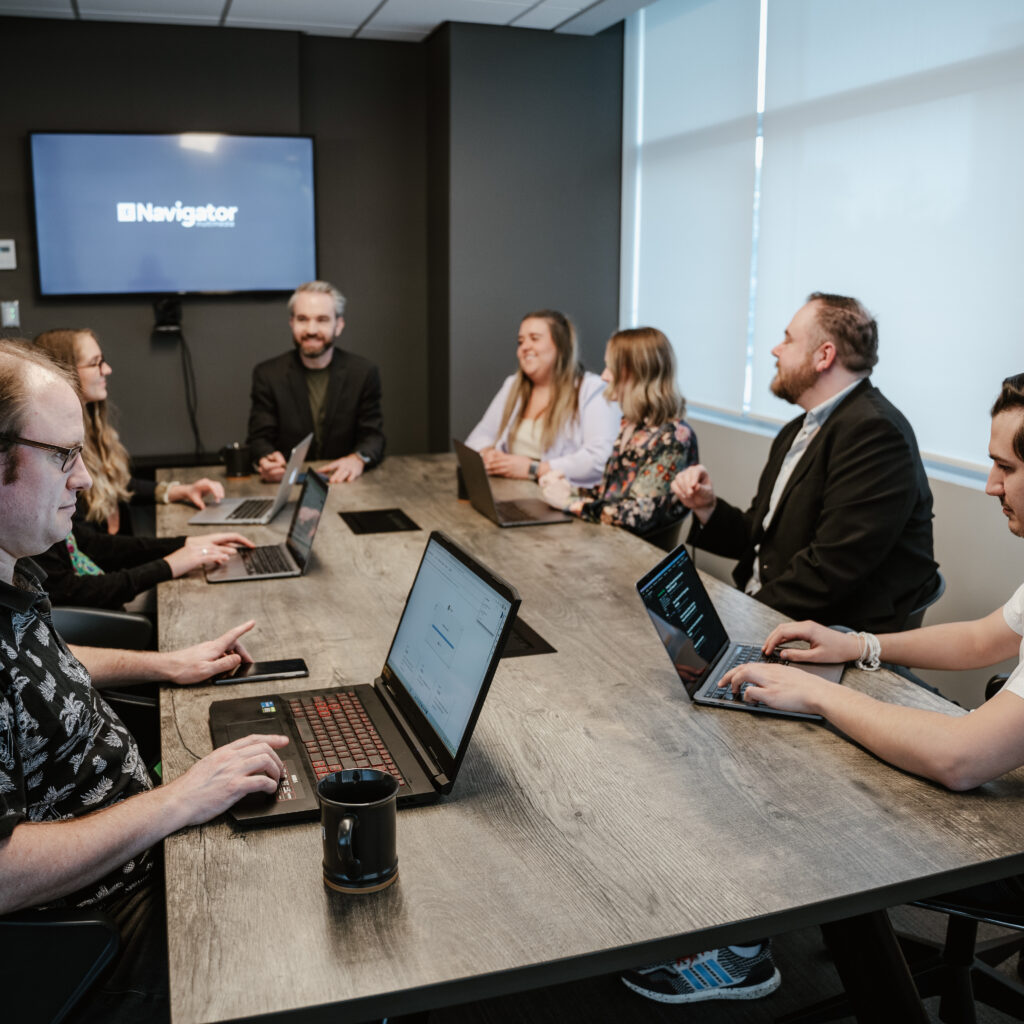Why I Try To Be Like Dick Cavett In Client Design Meetings
On paper, Dick Cavett and I do not have much in common.
I am a twenty-nine-year-old Canadian digital project manager who lives in a garden home. Cavett is an eighty-year-old American television personality and former talk show host who recently listed his oceanfront Montauk estate for $62 million.
But if you got us in a room together, I flatter myself to think we would speak to you in a similar pattern of conversation.
This is not by coincidence.
Since discovering old recordings of Cavett’s talk show (1968-74), while I was a dorm student, I have studied his interviewing style, particularly with intimidating guests, including Katherine Hepburn and Marlon Brando.
Cavett appeared to confront celebrities without agenda, yet always manage to tease out the details his audience was dying to know about. In gentle flows of conversation, he invited rich storytelling, deep divulging, and the natural creation of vulnerable moments.
In doing so, Cavett looted some of the greatest content you could ask for from private yet famous people. And did I mention his interviews ran in a 90-minute format? Cavett is a friggin’ master.
And so since my early days of freelance content writing to my position now as the project manager at Navigator Multimedia Inc., I have gone into every client interview or design meeting repeating the same mantra: Be like Dick Cavett.
If you’re not familiar with his canon of work, please set aside a few hours on YouTube and read below for how to improve client design meetings by being like Dick Cavett.
Really, really listen, you jerk.
“Cavett never mugged, never whooped it up for the audience, rarely told a formally constructed joke, and listened to the guest,” writes Slate contributor Clive James in his piece “The Genius of Dick Cavett”.
Listening is easy to fake, so when you’re actually listening, people notice. When you’re really listening, instead of throwing the conversation back to something adorable or intelligent that you want to say (probably full of annoying tech jargon), you reflect back what the person was saying (more about that in the next couple sections).
The outcome of an effective design meeting is not about you. It’s about the client – who they are, what they want and/or who they’re marketing to
You are smart and good at what you do – no need to impress the client further during their design meetings and make things super unproductive.
Be chill and speak the subject’s language.
Janis Joplin and Cavett make an unlikely pair, but Joplin seemed to enjoy herself so much on his show that she went on three times over the course of one year.
In her final visit, “she seems totally at ease during this conversation, a wide-ranging but informal chat that touches on everything from her feelings regarding concert riots to whether or not she ever waterskis,” notes Ultimate Class Rock contributor Jeff Giles.
Cavett provided a relaxed, conversational environment on stage for Joplin, with pet names (“my little songbird”), and jokes to match her tone and put her at ease.
It doesn’t take long to pick up on your client’s tone, body language and speaking style. As Lifehacker contributor Thorin Klosowski suggests, “mirror the person you’re talking to in body language, speed of your voice, volume and even your word choice,” in order to make the person you’re speaking with more comfortable.
Klosowski says even the tiniest of cues like crossing your legs if the speaker has crossed hers plays on our subconscious positive preference for people who act similarly to ourselves. The more we can mirror, the more our conversation partners will admire us.
The more your client admires you, the more positive an experience you are likely to have in getting things done for the project, including gathering feedback, sticking to timelines and producing bang-on results.
So be chill. Follow your client’s lead.
Don’t ask questions.
OK, ask a couple of questions. But from the words of Cavett himself, “Questions are the curse of so-called interviews.”
Instead of asking questions, frame a situation to evoke a response. Imply a concept or answer. Then build on what the interviewee or client says in return.
Do not stick to your script. Let the discussion go where it may, based on your deep listening. Deeper listening yields more thoughtful responses and gets you closer to the essence of what you are trying to understand of your client; brand voice, history and aspirations.
Look, I get it: in a client meeting situation, there may be some hard and fast questions you need to get out of the way. Do these need to be addressed in your meeting, or can you send those off in an email to the client beforehand?
“The best shows were when the topic just got going and you’d forget all about your notes and research and just let it flow,” says Cavett. Bring the exhilaration of a fine conversation to your client meetings. Make them part of the experience of working with you.
Make them memorable.
**Note: for more interview tips from Dick Cavett, check out this essential Fast Company post.



9
Tom
Hi Sarah,
Could I please borrow your Wild Things analogy for a slide in my Drupal South talk on Content Strategy?
Just want to add a couple of slides about the words + pictures connection and I love your example!
http://drupalsouth2017.drupal.org.nz/conference/sessions
http://www.smashingmagazine.com/2011/11/fluidity-content-design-learning-where-wild-things/
Many thanks,
Tom Grinsted
NZ